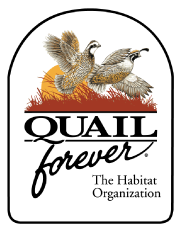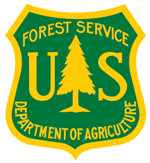News
Residents Encouraged to Participate in Appalachian Bat Survey
Pennsylvania Game Commission biologists are seeking assistance from residents in a regional monitoring effort to collect bat maternity colony data this summer. This monitoring is especially important to measure bat mortalities caused by White-Nose Syndrome (WNS), a disease that affects hibernating bats in Pennsylvania and other parts of the eastern United States.
NRCS, Landowners Improve Habitat for At-risk Species
Through voluntary conservation, American farmers, ranchers and forestland owners are restoring and protecting habitat for seven at-risk wildlife species.
Climate Science Center Research Funding Opportunity for FY 14
The U.S. Department of the Interior Northeast, South Central, and Southwest Climate Science Centers (CSCs) are seeking proposals for FY 2014. Proposals are invited for projects that support CSC science priorities.
Wetland restorations offer environmental, economic benefits
Scientists with USDA’s Natural Resources Conservation Service recognize the environmental and economic benefits regional wetlands provide and the importance of preserving wetland resources.
A Crowning Achievement
The Nature Conservancy plants 34,000 native red spruce trees to help bring back West Virginia’s mountaintop forests
Science Needs Your Dead Cicadas
The department of biology at North Carolina State University is looking for crooked cicadas: cicadas with one wing slightly shorter than the other, or with a wing containing an odd number of veins, or maybe a little leg segment that's not quite the right length.
U.S. Fish and Wildlife Service Tribal Wildlife Grants Program Awards Native American Tribes in 14 States for Conservation Work
The Eastern Band of Cherokee Indians in North Carolina is one of 23 Native Tribes to receive Tribal Wildlife Grants awards. The awards are funding a wide range of conservation projects throughout the nation on tribal lands.
Spring 2012 Earliest on Record
March 2012 set records for warm temperatures that promoted early leafing and flowering across large areas of the United States.
Celebrating 1 Million Feet of Conservation Fence in West Virginia
The U.S. Fish and Wildlife Service and Trout Unlimited, working in partnership with the USDA Natural Resources Conservation Service and Farm Service Agency, West Virginia Conservation Agency, Canaan Valley NWR, numerous non-governmental organizations and many landowners, have installed over 1 million feet of conservation fence throughout the state of West Virginia.
Restoration Effort Moving Forward with Land Acquisitions as Part of $21 Million Palmerton Zinc Natural Resource Damages Settlement
State and federal environmental officials announced today that two land purchases have been made to benefit the wildlife, people and landscape of the Kittatinny Ridge.
Front Row Seats to Climate Change
Increasingly erratic rainfall patterns can lead to declines in southeastern frog and salamander populations, but protecting ponds can improve their plight.
Service Estimates Economic Impacts and Releases Draft Environmental Assessment of Critical Habitat Designation for Neosho Mucket and Rabbitsfoot
The U.S. Fish and Wildlife Service is releasing the estimated cost and economic impacts and draft environmental assessment of the proposed critical habitat designation of two freshwater mussels, and is seeking public comment.
Interior Appoints New Climate Change Advisory Committee
Secretary of the Interior Sally Jewell today announced the members of a newly created federal advisory committee who will provide guidance about the Interior Department’s climate change adaptation science initiatives.
NRCS helps build resiliency to climate change
As experts predict growing climate changes in the United States, the USDA’s Natural Resources Conservation Service offers a variety of practices, programs and studies that help landowners build resiliency to its effects.
Wetlands clean water, provide homes for wildlife across the nation
Wetlands play a crucial role in the world’s ecosystem by protecting and improving water quality, filtering surface water, storing floodwater and creating or enhancing wildlife habitat.
Friends of the Migratory Bird/Duck Stamp Will Support Wildlife Conservation Through Federal Duck Stamp Program
The U.S. Fish and Wildlife Service recently signed a memorandum of understanding with the Friends of the Migratory Bird/Duck Stamp, formalizing a commitment by both organizations to cooperatively support and promote the Migratory Bird Hunting and Conservation Stamp, commonly called the Federal Duck Stamp.
National Strategy Will Help Safeguard Fish, Wildlife and Plants in a Changing Climate
In partnership with State and Tribal agencies, the Obama Administration today released the first nationwide strategy to help public and private decision makers address the impacts that climate change is having on natural resources and the people and economies that depend on them. Developed in response to a request by Congress, the National Fish, Wildlife, and Plants Climate Adaptation Strategy is the product of extensive national dialogue that spanned nearly two years and was shaped by comments from more than 55,000 Americans.
Service Estimates Economic Impact of Critical Habitat Designation for Fluted Kidneyshell and Slabside Pearlymussel
The U.S. Fish and Wildlife Service announces the availability of a draft economic analysis considering the impact of a proposal to designate critical habitat for two freshwater mussels proposed for listing as endangered.
U.S. Fish and Wildlife Service Invites Public to Provide Input to Environmental Assessment to Review Use of Genetically Modified Crops
The U.S. Fish and Wildlife Service is seeking public input as it evaluates the future use of genetically modified crops on national wildlife refuges that use farming in the Southeast Region. These refuges use farming as a wildlife management tool to help meet refuge specific conservation objectives for waterfowl and other species.
Fish and Wildlife Service Releases Eagle Conservation Plan Guidance
The U.S. Fish and Wildlife Service released Eagle Conservation Plan Guidance to provide a pathway for the responsible development of wind energy that fosters protection for bald and golden eagles.






















